► We drive an original Renault 4
► Join us onboard a 1988 GTL
► A trailblazing French original
At times of national uncertainty, do we seek comfort in the past? Developed during the twitchy tweens and twenties, we shouldn’t be surprised that Renault has come up with the comfort blanket of the Renault 4 E-Tech electric car – a reassuringly retro-flavoured glance back to simpler times, to an era when Europe’s car manufacturing prowess was hitting its peak in the post-war years and when effortless style was measured in baguette holders and removable hammock seats.
The original Renault 4, or Quatrelle as it became known in France owing to its 4L badge, was one of the most successful cars the company has ever made, selling more than 8.1 million to unpretentious buyers wanting simple, no-frills and highly practical transport. It survived in production for an extraordinary 33 years with only marginal changes to its bulbous bodywork and it’s to this unlikely hero that La Régie turns now, as it seeks to reassure buyers nervous about switching from pumps to plugs.
Renault has quite the back catalogue to mine and it’s picked two of its most successful small cars from the ’70s and ’80s to launch a pair of retro-inspired, but future-facing EV tiny tots. The Renault 5 E-Tech has already impressed in our first drive and now its more practical, roomier sibling is here to offer a dollop of additional space wrapped up in a similarly modish bodyshell.
Why our distinguished columnist Russell Bulgin loved the Renault 4
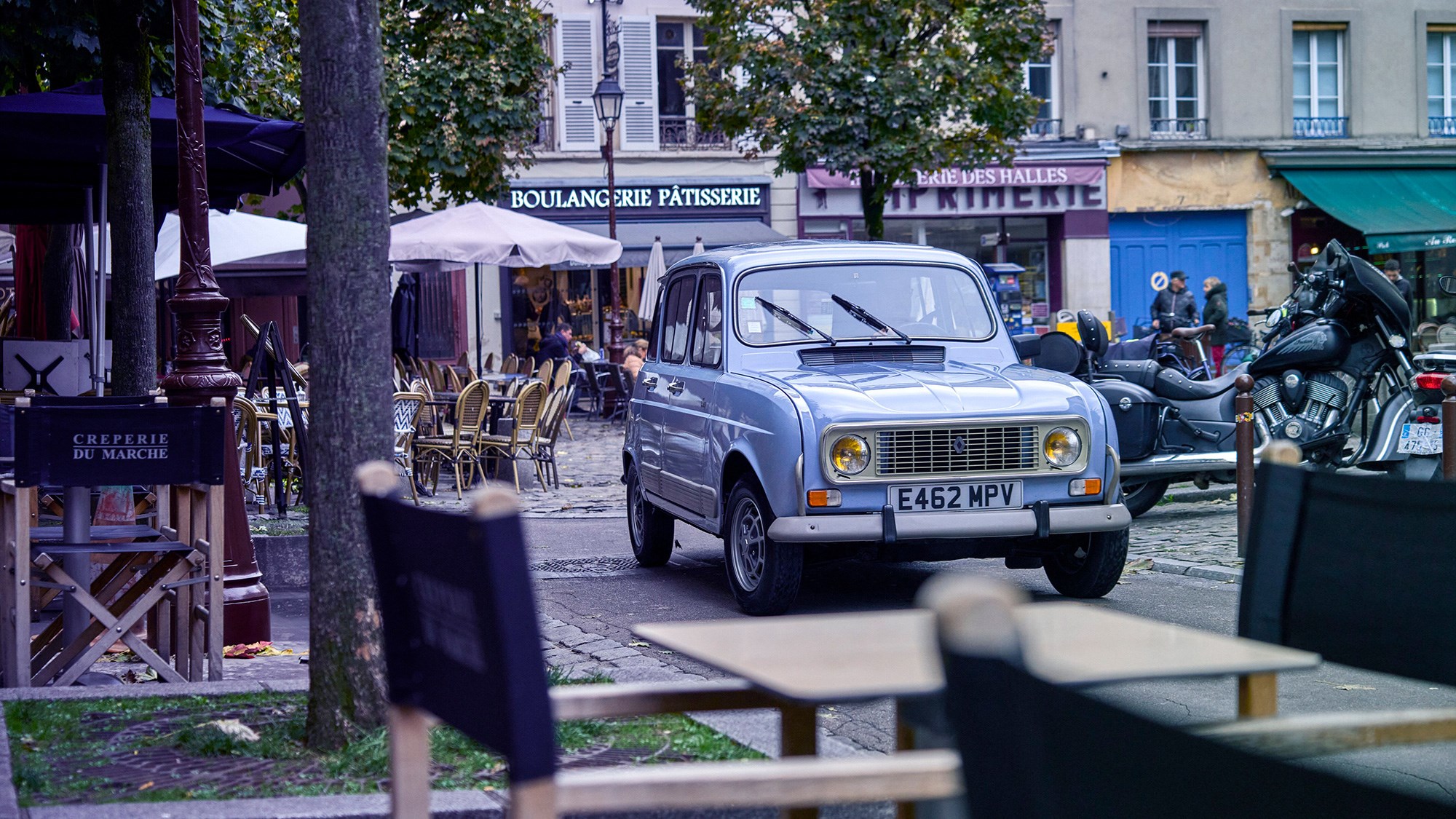
We haven’t driven the new 4 E-Tech yet, but to prepare us, we have taken an original Renault 4 for a spin around its Paris birthplace. Read on for one of our occasional Driving The Classics trips down memory lane…
At a glance
Pros: Space on offer, perky drive, ride comfort, clever loadbay
Cons: Most British examples have rusted away, sob…
What is it?
You’re looking at a late-edition 1988 Renault 4 GTL, equipped in the run-out Clan special edition trim. We borrowed the car from owner Nick Bailey for a recent feature in CAR magazine, where we compared the original with the new electric Renault 4 (below – see the December 2024 edition in print or digital editions for more).
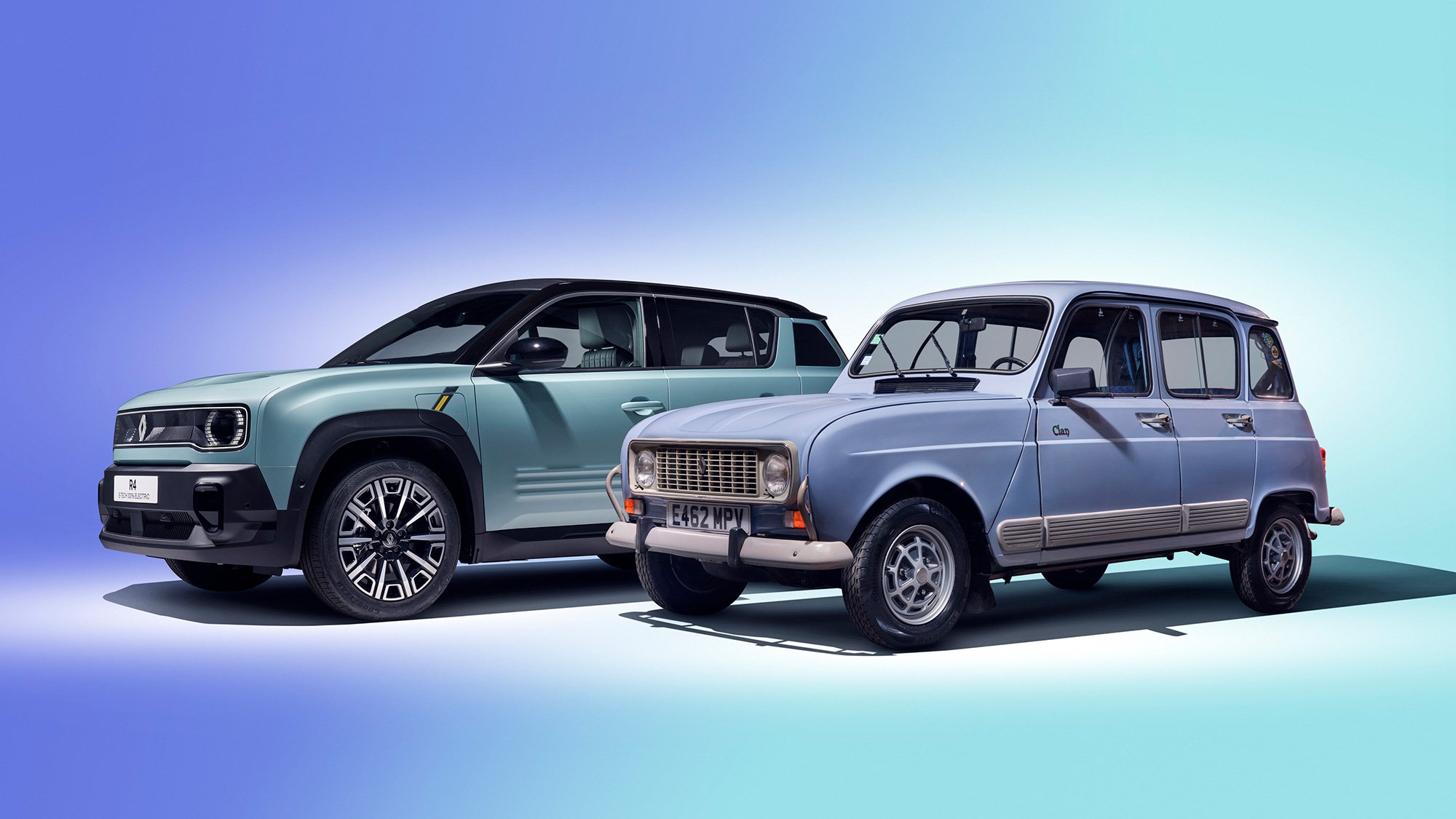
Francophile Bailey searched long and hard to find this fine 1988 Clan. ‘It’s a two-owner car in the rare 441 Bleu Brume colour (most were white or cream by this time), with desirable Fergat wheels,’ he tells us. ‘It benefitted not only from the kind climate in the south of France, and no annual dosing of salt that claimed so many cars here in the UK, but also from being always parked undercover and a fastidious owner who regularly serviced it and was intent on changing the dampers almost every year – for no apparent reason.’
There can be few treats in life as rewarding as driving a classic French car around the streets of Paris. Wherever we go in our Quatrelle, couples stop and stare, we’re accosted at every kerb and even the officious gendarmes around Versailles are happy to overlook our parking transgressions as they just want to come and pore over the Blue Mist example. They’re intrigued by the UK plates on our left-hooker, telltales that this stunningly restored Clan final edition started life in the south of France before being rescued for retirement on this side of the Channel.
What are the specs?
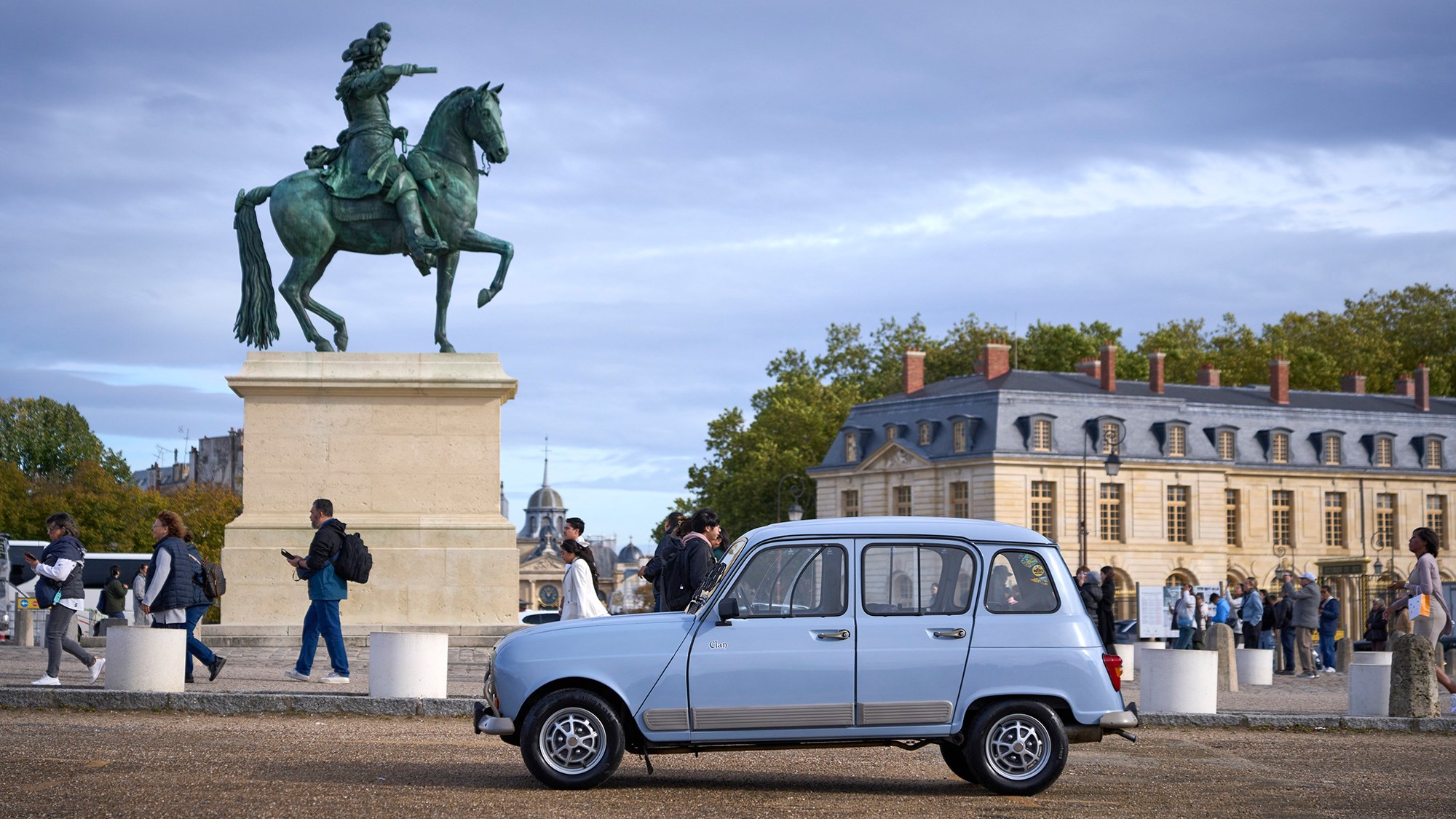
The distinctive silhouette of the original 4 has become one of the best-loved French cars of all time – justifying its place in the history books alongside the Citroen DS, Peugeot 205 and their ilk. This is a very French execution of the people’s car, with little in the way of luxury or sporting thrills: the 4 was conceived as robust transport for the masses and was essentially Renault’s response to the Citroen 2CV.
After the straitened post-war decade, Europe’s economies slowly rebounded and consumers developed the wherewithal for personal transport. Renault chairman Pierre Dreyfus was convinced the emerging middle-classes would respond well to a ‘blue jeans car,’ reflecting the more liberal values ushered in during the late 1950s and ’60s, and this optimistic modernism infuses the design.
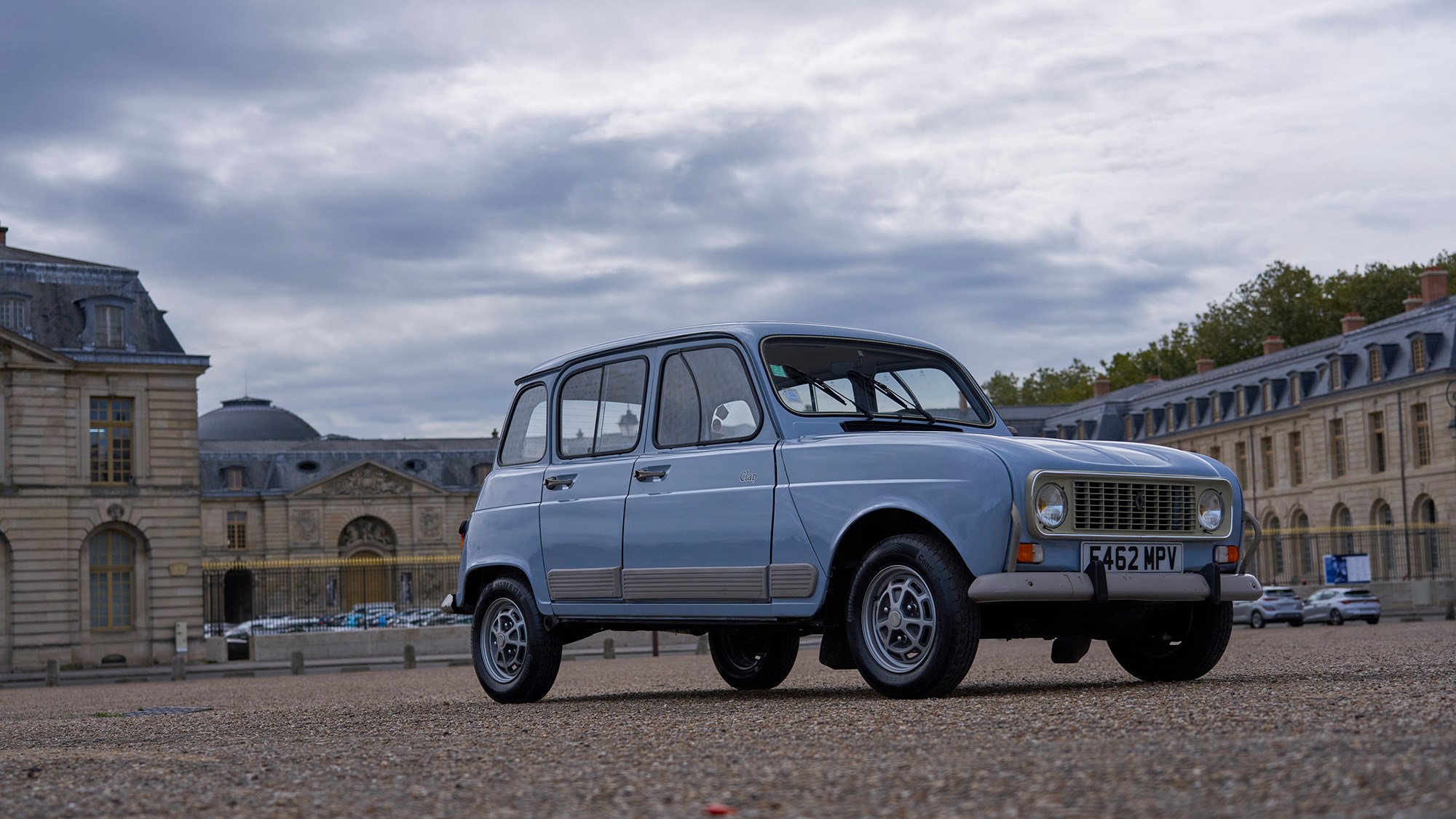
The front-focused 4 marked a shift from rear-engined, rear-wheel drive Renaults, allowing for more passenger space and a generous boot, while simple deckchair-style seating could be easily removed to turn the car into a van with a vast 950-litre boot. That’s extraordinary in a car just 3.66m long – and it shows where the new car’s practicality focus originated.
Project 112 launched at the Paris motor show of 1961 and was built at the famous Île Seguin factory on an island on the Seine in Paris. CAR magazine described the Renault 4 as ‘fashionably useful’ in our succinct GBU buying guide in period. Renault marketed it cleverly, releasing 200 models around Paris for anyone to drive, a bit like electric scooters today, and kept interest alive with a regular flow of special editions, ranging from classy Parisiennes with wicker decals to radically rebodied Sinpar desert-bashers and beach buggies.
It’s testament to the rightness of the design that the basic hatchback’s bodywork barely changed over the next three and a half decades, while the powertrain grew from the original’s 603cc four-cylinder to a heady 1108cc Cleon lump on the late Clan edition we’re driving here.
What’s it like inside?
The Renault 4 cabin is pleasingly simple, with few switches and a lot of scratchy black plastic. If you imagine a 1980s interior, this is it: no touchscreens (rejoice!), a simple indicator stalk to the left, wipers to the right and a large curved gearlever sprouting from the middle of the dashboard.

It might be low-tech (though notice the portentous digital clock in front of the passenger), but it is sturdy and everything looks in one piece – and crucially it’s roomy in the front. The back seats are more aimed at children, but the chairs themselves are comfy and soft and have retained their squish and support remarkably well over the past four decades.
When we pull over for photography, I’m given chance to rummage around in the boot (below). It’s such a clever design, the box-flat tailgate lifting to reveal a generous 255-litre loadbay with that trademark low floor.
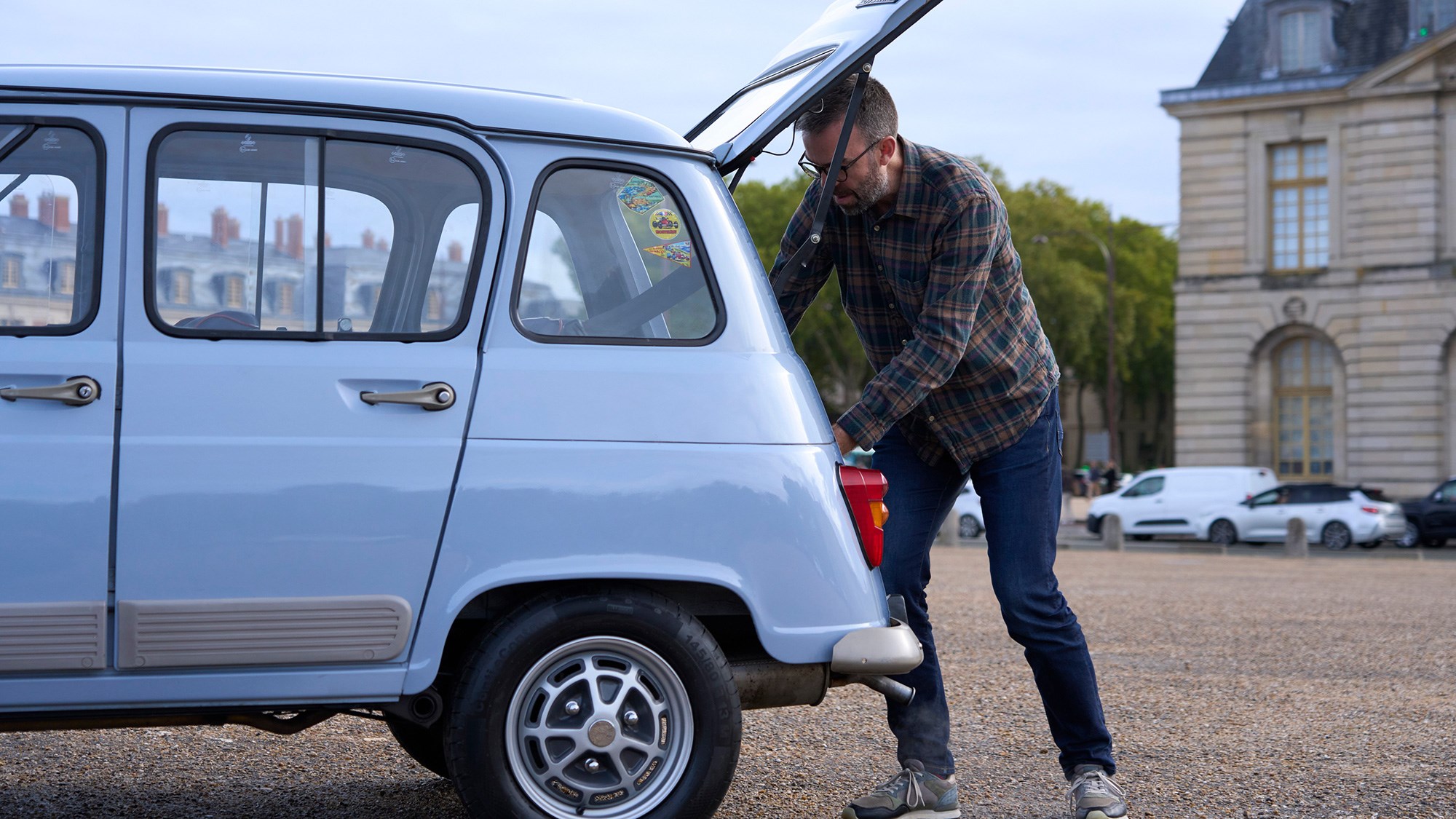
Hats off to whoever decided to mimic this practicality in the new Renault 4 E-Tech – it’ll make a real difference and a stand-out feature in a sea of same-again crossovers that pay lip service to functionality but rarely break the mould.
What’s it like to drive?
I’m whisked back to my early 1980s childhood, when we did a holiday swap with a family from Jersey and six of us were jettisoned into a Renault 4 for a week. My father had never driven a manual before and our family kangarooed and bumped around the island, little me squashed in the back intrigued by the push-me-pull-you dash-mounted gearlever high up.
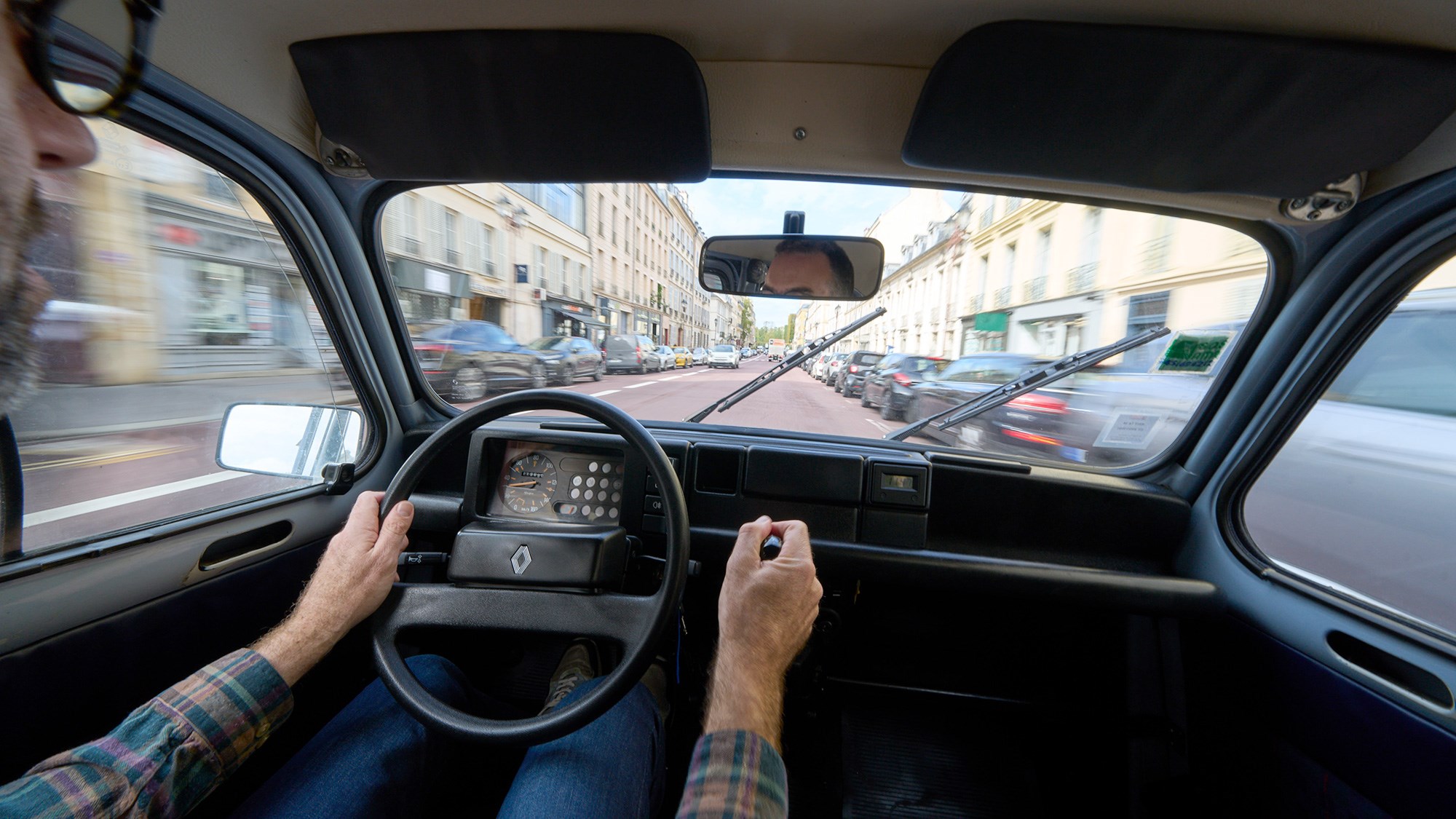
Fast-forward four decades and it’s me navigating the four-speed dash-top ’box, as we nudge out from our hotel on a day of exploration. I needn’t have worried, as the 4 GTL is easy to drive. Those compact dimensions, upright glasshouse and slender pillars make it a cinch to position on the road and the 1.1-litre four-pot is in remarkably rude health, starting first time, every time.
The high-up umbrella gearlever will be familiar to anyone who’s driven a 2CV and the shift quality is neatly precise and mechanical. A lift of the bonnet reveals why: there’s a long connecting steel rod going over the front-mid-mounted engine to the gearbox nestled right at the front of the engine bay (see below). It’s one of many quirks on the Renault 4. Did you know, for example, that the wheelbase is different on both sides, owing to the staggered torsion bars suspension, or that this was the first Renault with a sealed coolant circuit?
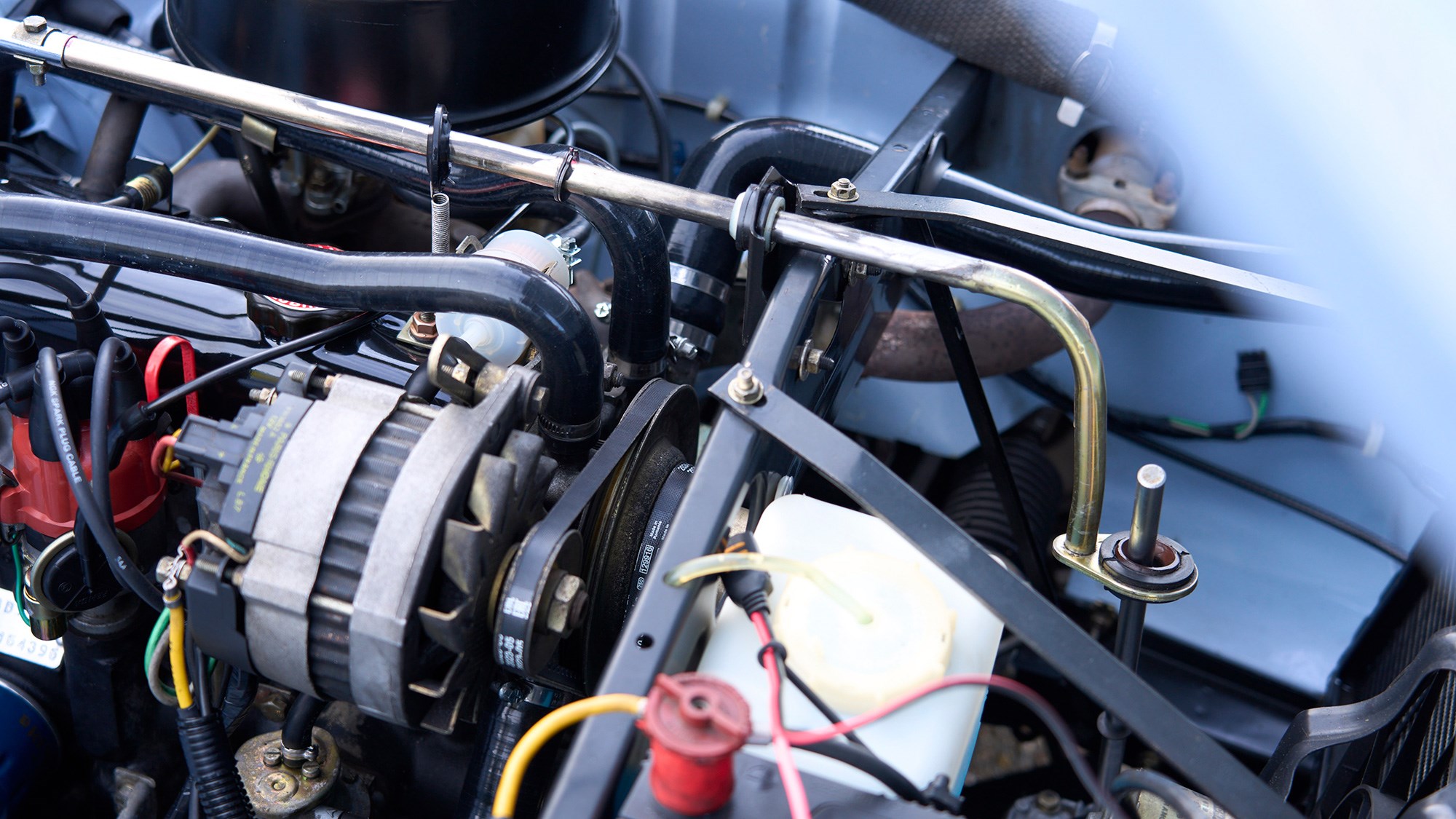
All this is swirling around my mind as we aim for the palaces of Versailles to find some suitably French backdrops for photographer John Wycherley. The little Renault 4 feels lively and responsive, as it should with just 720 kilos to lug around, and the 1.1-litre engine brings memories flooding back from my first car, an unripe-tomato red Renault 5 GTL from a similar vintage. This 4 GTL is in significantly better fettle and I’m smitten by the care with which the owner Bailey has restored it. Period stickers and French insurance paperwork still adorn the glasswork, the engine bay is spotless and period yellow headlamps are evocative details.
We glide around the Parisian streets, long-travel suspension soaking up the worst cobbles and corrugations as the tiny 145/80 13-inch Continentals bob up and down to filter out patter in the cabin. It’s a blunt reminder of how bloated modern cars have become; at just 1.49 metres wide, the original Renault 4 nips through gaps in traffic like a big scooter.
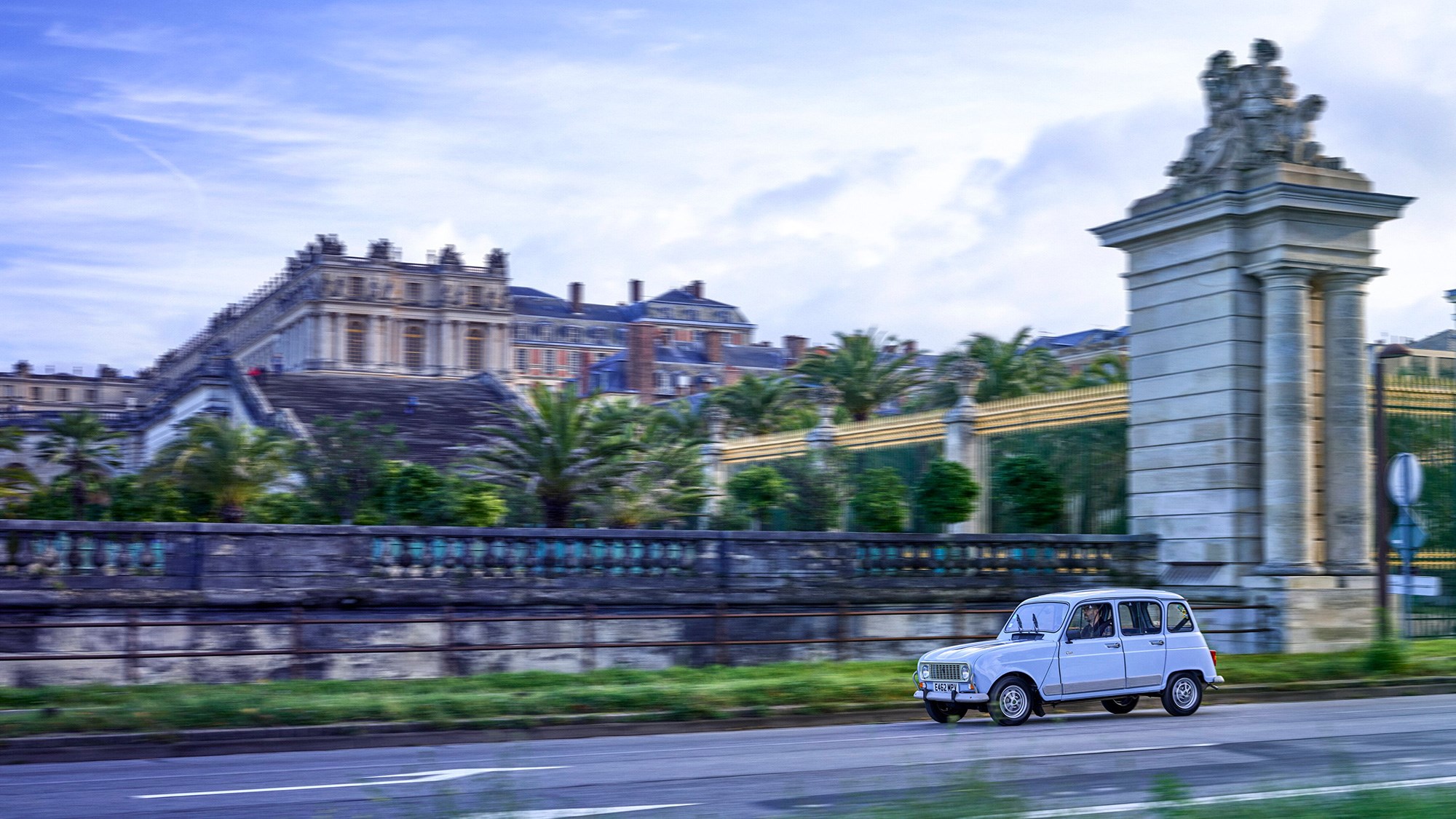
Verdict: 1988 Renault 5 GTL
The original Renault 4 is one of the very best French designs: chic looks, effortlessly practical and democratically engineered for the real needs of everyday motorists. Spending a day with one makes you lament the purity of the best cars from the last century.
They say you have to look back to understand the future. And this immaculate Renault 4 goes some way to explaining the ambition for the new E-Tech version. Spending time in the two together makes you realise you can’t simply recreate the past. But you can be inspired by it.